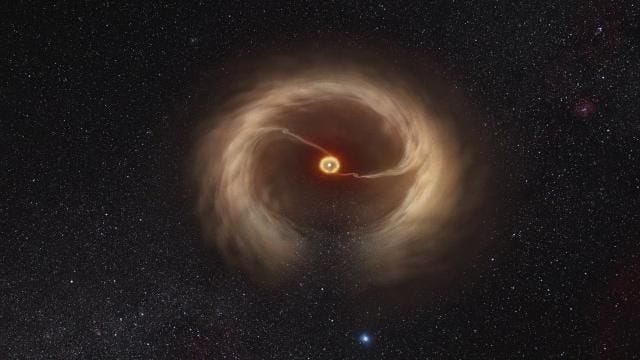Observing stars and planets, everyone can do that. The birth of a star ? We don't know, but we know how they are born, and that 3-4 stars are born each year in our galaxy. But the birth of a planet ? Now, YES.
Thanks to ALMA radiotelescopes in Atacama desert, Chile, ESO astronomers, whose Simon Casassus, have obeserved the gas supply of a giant gas planet around HD 142527. This star, located at about 450 light-years away from the Earth, is surrounded by a gigantic disc of gas and cosmic dust in two parts, with a huge space between the two parts : the internal has a radius similar to the orbit of Saturn (about 750 M km) and the external 14 times farther.
Probably named HD 142527 b, this planet is one of the first exoplanets (extrasolar planet) discovered in 2013. It is powered by huge gas flows, and so it confirms the theory on the formation of giant planets.
"Astronomers had predicted the existence of these flows, but this is the first time we were able to observe them", said Simon Casassus in a statement from the ESO.
We know that it's very hard to observe directly planets in formation because they are very deep in these gas flows, almost completely opaque. But these flows are studied and so the astronomers will learn more about them.
__________
Source : eso.org
















I feel small.
+100 for this comment Andreas ! :p